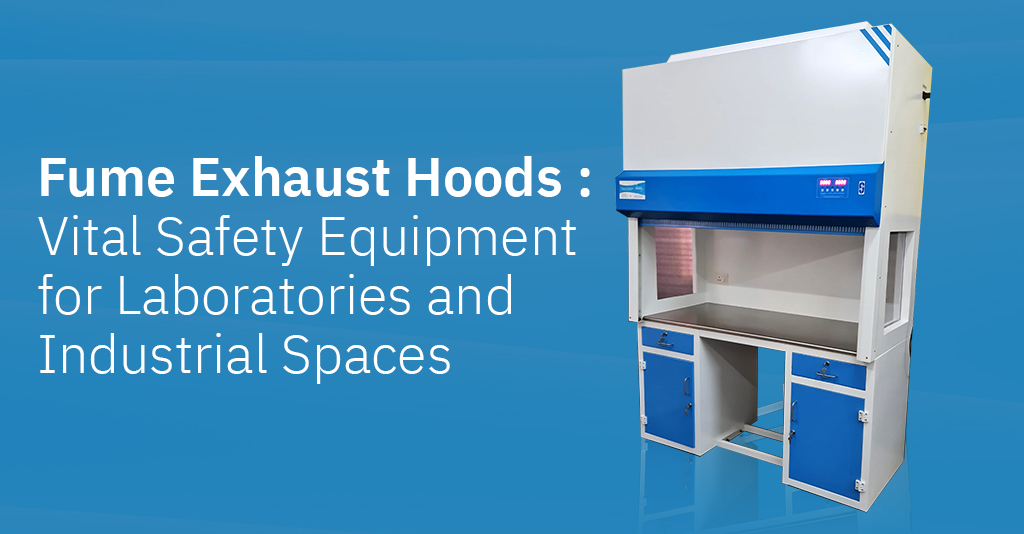
Fume Exhaust Hoods: Vital Safety Equipment for Laboratories and Industrial Spaces
Fume exhaust hoods are critical safety devices used in laboratories and industrial environments to control hazardous fumes, vapours, and particulate matter. These hoods are designed to protect
workers, researchers, and the environment from potentially harmful substances that could be inhaled
or cause contamination. By drawing in and filtering harmful airborne contaminants, fume exhaust
hoods play a vital role in ensuring a safe and clean working environment.
In this comprehensive guide, we’ll explore the importance of fume exhaust hoods, their types,
applications, and how they operate, as well as their maintenance and best practices for optimal use
What Are Fume Exhaust Hoods?
Fume exhaust hoods are specialized ventilation devices designed to capture and remove harmful
fumes, gases, Vapours, and particulates generated during chemical, biological, or industrial processes.
These hoods are typically installed in laboratories, manufacturing plants, and other industrial settings
where hazardous substances are present.
Fume hoods work by creating a negative pressure zone that pulls in contaminated air and exhausts it
safely, often through a filtration system or directly to the outside of the building.
What Are Fume Exhaust Hoods?
Fume exhaust hoods come in several different designs and configurations, each suited to specific
applications. Below are the most common types:
Chemical Fume Hoods
- Function : Primarily designed for laboratories where chemicals are used, chemical fume hoods are engineered to capture fumes, Vapours, and gases from processes such as mixing, heating, or chemical reactions
- Features
- Constructed with durable materials that resist corrosion from hazardous chemicals.
- Equipped with adjustable baffles and exhaust systems to optimize airflow.
- Applications
- Widely used in research labs, pharmaceutical, and chemical manufacturing.
Biological Fume Hoods
- Function : Designed to protect workers and the environment from biological contaminants such as bacteria, viruses, or other microorganisms. These hoods are typically used in labs dealing with microbiological work.
- Features
- Often equipped with high-efficiency particulate air (HEPA) filters that trap airborne biological agents.
- Contain a built-in UV light system to sterilize the work surface.
- Applications
- Common in medical and research laboratories, especially those working with pathogenic organisms.
Laminar Flow Hood
- Function : A type of fume hood where filtered air flows in a unidirectional manner, ensuring a sterile environment for sensitive work, such as cell culture or electronics manufacturing.
- Features
- Air is filtered through HEPA filters before being released in a laminar (unidirectional) flow, minimizing the introduction of contaminants.
- Applications
- Used in laboratories that require a sterile and contamination-free working environment.
Downdraft Fume Hoods
- Function : These hoods capture contaminants from above and pull them downward through the exhaust system.
- Features
- Ideal for heavy or dust-laden fumes where vertical airflow is less effective.
- Applications
- Often used in welding or industrial processes generating heavy particulate matter or fumes
Ductless Fume Hoods
- Function : These hoods capture contaminants from above and pull them downward through the exhaust system.
- Features
- Equipped with filters like activated carbon or HEPA filters to capture fumes and gases
- Applications
- Used in spaces where ducting is not practical or when there is no direct access to an external ventilation system.
How Fume Exhaust Hoods Work
Fume exhaust hoods operate on the principle of creating negative pressure to draw in contaminated air
and prevent hazardous substances from escaping into the work environment. Here’s a step-by-step
breakdown of their operation:
is designed for specific levels of biosafety and applications.
Air Intake
- The contaminated air is pulled into the hood through the opening at the front. This is usually aided by a fan system that creates the necessary negative pressure.
Filtration
- Depending on the type of hood, the air is either filtered using a HEPA filter, activated carbon, or a combination of both. In some cases, specialized filters may be required based on the contaminants present.
Exhaust
- After the contaminants are captured, the purified air is either released back into the room (in ductless hoods) or expelled outside the building through an exhaust system (in ducted hoods)
Airflow Control
- The airflow within the hood is carefully controlled to maintain a constant velocity, ensuring that fumes and particulates are efficiently captured. Many modern systems come with airflow indicators to alert operators when airflow is reduced.
Applications of Fume Exhaust Hoods
Fume exhaust hoods are indispensable in numerous industries where exposure to harmful substances
can pose a serious health risk. Below are some of the key sectors that rely on fume exhaust hoods:
- Laboratory Research and Development
- Used in chemical, biological, and pharmaceutical labs for experiments that involve volatile chemicals, biological agents, or hazardous Vapours.
- Pharmaceutical Manufacturing
- Fume exhaust hoods are essential in pharmaceutical production to protect workers from toxic chemicals and ensure the integrity of the manufacturing process.
- Chemical Processing
- These hoods are crucial in chemical plants where reactions or handling of hazardous chemicals occurs. They ensure that any fumes, Vapours, or gases are safely vented.
- Semiconductor and Electronics Manufacturing
- In semiconductor production, fume hoods are used to handle materials like solvents and adhesives, ensuring a clean and safe work environment.
- Welding and Metalworking
- Downdraft fume hoods are commonly used to capture fumes and dust produced during welding, cutting, and grinding operations
Choosing the Right Fume Exhaust Hood
Selecting the right fume exhaust hood depends on the specific requirements of your workplace,
including the type of work being done, the chemicals or materials being used, and the ventilation
infrastructure available. Consider the following factors when making your choice:
Installation
- Location
- Place the fume hood in a location that avoids disturbances from airflow, such as near open doors, windows, or high-traffic areas.
- Integration with Ventilation Systems
- Ensure that the fume hood is integrated with the building’s ventilation system, including proper ducting or exhaust pipes to safely vent the captured contaminants.
Maintenance
- Regular Filter Replacement
- HEPA and activated carbon filters need to be replaced regularly to ensure proper filtration. Follow manufacturer recommendations for filter life and replacement intervals.
- Cleaning
- Clean the interior and exterior of the fume hood regularly. Contaminants can accumulate on surfaces, affecting the efficiency of the hood.
- Airflow Testing
- Test airflow and velocity at regular intervals to ensure the system is functioning correctly. Airflow indicators and alarms can be used to monitor this.
- Annual Inspections
- Schedule annual inspections and certifications to ensure the hood is compliant with safety standards and regulations.
Advantages of Fume Exhaust Hoods
The benefits of using fume exhaust hoods are significant:
- Protection from Harmful Substances
- They prevent exposure to hazardous chemicals, gases, Vapours, and particulates.
- Improved Workplace Safety
- Fume hoods help maintain a safe environment, reducing the risk of accidents and illnesses due to exposure to toxic substances.
- Increased Productivity
- Workers can perform their tasks in a safer, cleaner environment, which boosts productivity and minimizes downtime caused by health hazards.
- Compliance with Regulatory Standards
- Fume hoods ensure that workplaces comply with health and safety regulations, such as OSHA, EPA, and ANSI standards.
Challenges in Using Fume Exhaust Hoods
While fume exhaust hoods are essential for safety, there are some challenges:
- Initial and Operational Costs
- Fume exhaust hoods can be costly to install, especially if ducting or specialized filtration is required.
- Maintenance Requirements
- Regular maintenance, including filter changes and airflow checks, can be timeconsuming and costly.
- Energy Consumption
- Fume hoods can consume significant amounts of energy due to their constant ventilation and air circulation systems.
Conclusion
Fume exhaust hoods are a critical component of a safe and effective ventilation system in laboratories,
manufacturing facilities, and other industrial spaces where hazardous fumes are present. By capturing
and removing harmful airborne contaminants, they ensure the health and safety of workers, protect the
environment, and maintain compliance with industry regulations. Choosing the right fume exhaust
hood for your specific application, coupled with proper installation, regular maintenance, and safety
protocols, will help ensure a clean, safe, and efficient working environment.
Recent Posts
- Best Fume Exhaust Hood Manufacturers in Chennai, India: What Sets Them Apart
- Best Laminar Airflow Clean Benches Provider in Chennai | Clean Air Systems
- Reliable Laminar Airflow Suppliers in India | Clean Air Systems
- Top Laminar Airflow Manufacturer in Chennai | Clean Air Systems India
- Laminar Airflow Units: Ensuring Sterility and Safety in Laboratory Environments
Recent Comments
No comments to show.

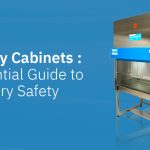
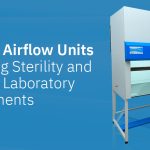
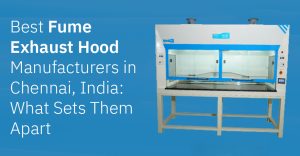

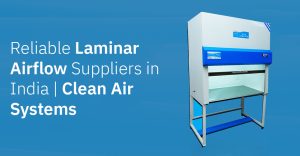
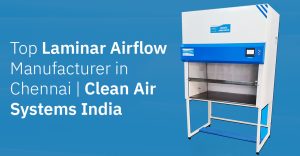
No comment yet, add your voice below!